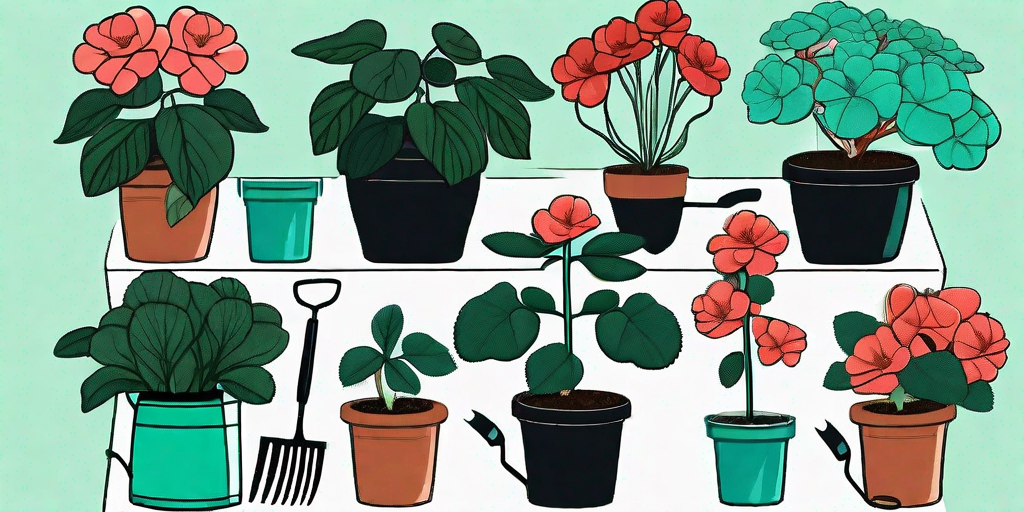
Welcome to the vibrant and vivacious world of tuberous begonias! These flamboyant flowers, with their lush, full blooms and rich, varied colors, are a sight for sore eyes. But wait, before you start imagining your garden as a begonia bonanza, let's get down to the nitty-gritty of begonia care and maintenance. Don't worry, it's not rocket science, just a bit of botanical brilliance!
The Basics of Begonia Care
Understanding Tuberous Begonias
First things first, let's get acquainted with our blooming buddies. Tuberous begonias are a species of begonia that grow from tubers, hence the name. They are known for their large, double flowers that can be as flamboyant as a carnival in Rio. But remember, with great beauty comes great responsibility!
These begonias are not your run-of-the-mill, plant-and-forget kind of flowers. They need a bit of pampering, a bit of TLC, and in return, they'll transform your garden into a riot of colors. So, are you ready to roll up your sleeves and get your hands dirty? Let's dive in!
Location, Location, Location
Just like in real estate, location is everything for your begonias. These divas of the plant world love a bit of shade and can't handle direct sunlight. So, find a spot in your garden that gets filtered sunlight or is in partial shade. Remember, a sunburnt begonia is a sad begonia!
Also, these plants love well-drained soil. Waterlogged soil can lead to root rot, which is as nasty as it sounds. So, make sure your begonias have a nice, cozy, well-drained spot to call home.
How to Plant Tuberous Begonias
Prepping the Tubers
Before you plant your tubers, you need to wake them up from their slumber. Start by soaking the tubers in warm water for about 12 hours. This is like a spa day for your tubers, getting them ready for the big show.
After their soak, it's time to plant. But wait, don't just throw them in the ground. Place them gently, concave side up, in a shallow tray filled with damp peat moss. Cover them lightly with more peat and keep them in a warm place. In a few weeks, you'll see sprouts. That's your cue to plant them in pots or in the garden.
Planting in the Garden
When planting in the garden, make sure you've chosen the right spot. Remember, shade and well-drained soil are key. Dig a hole about 1 inch deep and place the sprouted tuber in it, sprout side up. Cover with soil, pat gently, and water thoroughly.
Space your begonias about 12 inches apart. They need their personal space to grow and bloom. And voila, you've successfully planted your tuberous begonias!
Caring for Your Begonias
Watering and Feeding
Watering your begonias is a bit like Goldilocks and the three bears. Not too much, not too little, but just right. Water thoroughly, but make sure the soil drains well. Nobody likes soggy feet, not even begonias!
Feed your begonias with a balanced liquid fertilizer every two weeks during the growing season. Think of it as their personal buffet, keeping them happy and healthy.
Winter Care
As winter approaches, your begonias will start to look a bit tired. That's because they're getting ready for their winter nap. Cut back on watering and let the foliage die back naturally. Once the foliage is dry, dig up the tubers, brush off the soil, and store them in a cool, dry place for the winter. Come spring, they'll be ready for another season of spectacular blooms.
Common Problems and Solutions
Powdery Mildew
Powdery mildew is a common problem with begonias. It looks like someone dusted your plants with flour. Not a good look! To prevent it, make sure your plants have good air circulation and avoid watering from above. If your plants do get infected, treat them with a fungicide.
Root Rot
Root rot is another common issue, often caused by overwatering. If your plants look sickly and their leaves are yellowing, you might have a case of root rot. Cut back on watering and make sure the soil drains well. If the problem persists, you might need to repot your plants in fresh, well-drained soil.
Frequently Asked Questions
- When is the best time to plant tuberous begonias?
The best time to plant tuberous begonias is in the spring, after the last frost. This gives them plenty of time to grow and bloom during the summer.
- How often should I water my begonias?
Water your begonias when the top inch of soil is dry. Avoid overwatering as this can lead to root rot.
- Do begonias need a lot of sun?
No, begonias prefer shade or filtered sunlight. Too much direct sunlight can scorch their leaves.
So there you have it, the secrets to thriving tuberous begonias. With a bit of care and attention, you can turn your garden into a begonia paradise. Happy gardening!















